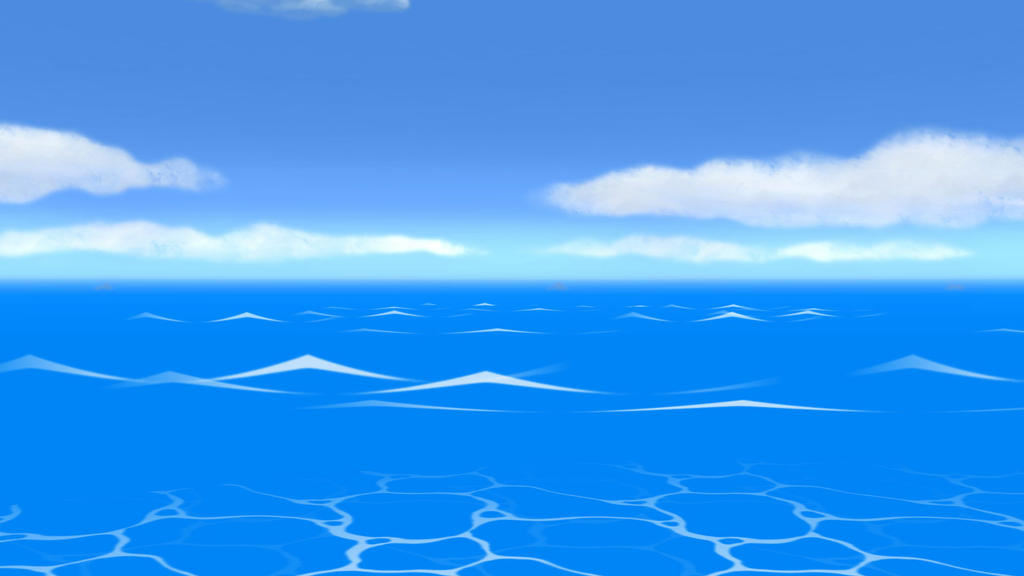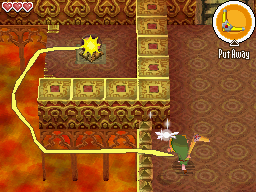Welcome! This is just a fraction of the reviews and reminiscent posts covering the expansive “Legend of Zelda” franchise in a project titled “The Legend of Zelda: A Blogger’s Journey,” which covers the many adventures of Link, from its creation in 1986 to its arguable magnum opus in 2017. This massive undertaking was started by fellow blogger NekoJonez (NekoJonez’s Gaming Blog), and though we had some rough-footing (what with aligning individual schedules to a project on this scale), I’m proud to be a part of the brave thirteen bloggers who were captivated by this memorable franchise, and wish to tell their own tales about the games they love.
Here I have chronicled my experience playing “The Legend of Zelda: Spirit Tracks” in Part 2 of 2. Part 1 over the game’s prequel, “The Legend of Zelda: Phantom Hourglass,” can be found here.
This is only the third blogger project I’ve ever been part of, so an extended thank you to NekoJonez for recruiting me back in June of 2017—we’ve come such a long way, my friend!

Awesome logo by zoef
New Hyrule, New Problems
A century has passed since the Hero quelled the Realm of the Ocean King (2 years in our world, now 2009). A mainland was found, and the kingdom of New Hyrule was established by a reincarnation of Princess Zelda. Standing tall in the center of the Overworld is the Tower of Spirits, a “lock” of sorts that binds a great demonic force within the land, and sprawling from that tower is a vast network of railroad tracks that act as “shackles.” Link, also reincarnated as a young engineer, lives a peaceful life within New Hyrule. But when the sly and greedy Chancellor Cole reveals his plans of reviving the great evil Demon King Malladus, Link, like clockwork, is called upon by his Princess once more.
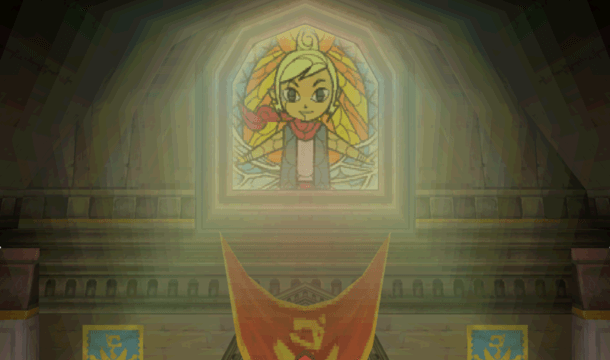
Before the two can take Cole down, however, the Tower of Spirits is broken up into giant chunks which float above the tower’s remains. Zelda is captured, and though Link cannot save her body, her spirit is extracted and placed into the armor of a phantom knight. Now a princess in spirit only, the two become entrusted by Anjean, a “Lokomo” or sage of the tower, with the great vehicle that once rode the rails to keep evil at bay: The Spirit Train. To save her kingdom, Link and Zelda embark on a quest to restore the spirit tracks to the land, in hopes of once again binding the Demon King to his eternal prison.
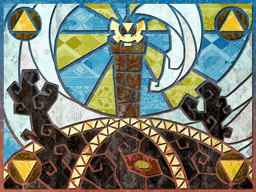
Rebuilding Zelda One Force Gem at a Time
Rather than stand as another “save the princess” game, Spirit Tracks rebuilds the legend of Zelda herself from scratch by placing her on the battlefield next to the Hero. For the first time, Zelda can not only lead the attack but also be used as a character via the DS’s stylus; just draw her a path and she’ll act accordingly! Like with its predecessor, this cool function can also be a bit of a pain, what with the drawing and timing inaccuracies. But it’s still a great use of the device—I mean, who doesn’t want to control a giant armored phantom Zelda!?

Exclusively for the DS, Spirit Tracks involves you in a way that no pocket console has before. While it has the same format as Phantom Hourglass (returning to one dungeon—Tower of Spirits—repeatedly throughout the game, though now you don’t have to re-explore floors), it has a couple different gimmicks. One is the Spirit Train itself. Like the ship in PH, you set your course by drawing on the map. What’s new this time is that you can’t trace your trail freely because, well, uh, a train has to sit on tracks. So once again, the titular concept ends up being a huge restriction on the player. At least you get to conduct a train, right?
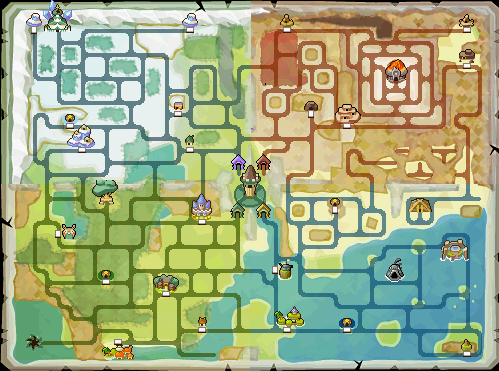
The Power of Music
One function that sees increased usage in the game is the microphone, to which we get THE MOST FUN ZELDA INSTRUMENT TO PLAY, PERIOD. Zelda bestows the Spirit Flute (gosh, these names) upon Link, which allows him to channel the power of the Spirits of Good. Like a real flute, you blow into the device’s mic, sliding the stylus to blow into the different pipes. It’s much more entertaining to listen to and play than the Ocarina, though less iconic. (Which is tragic considering how the tunes are so MUCH better.)

Speaking of, Spirit Tracks holds some of the franchise’s best music to date, including the “Realm Overworld” theme, “Link and Zelda’s Duet,” and many more. Through the Spirt Flute, Spirt Tracks reinstates the power of song and the gift of music, providing some of the most compelling and underrated main themes written for Zelda.
Lastly, the Link x Zelda interactions are much more interesting than in PH or, heck, most of the franchise. This is because, unlike most games where Zelda is more of a “deity” watching over the game, she plays a critical role in all the action, all the time. I think we’re all rather fond of our Princess, and to have her accompany us all the way makes me love her presence more than I ever have before.
A Childishly Charming End to the Trilogy
And that’s about it. Like with Phantom Hourglass, you traverse the world, collect the right gems, forge the game’s titular sword, and slay the force of evil causing everyone a headache. This is the third game in the Toon Link Trilogy, however, and that makes its ending kind of special. Like how Ganondorf was bested in Wind Waker, the legendary Bow of Light is summoned forth in the finale, which, in a sense, feels like it completes the trilogy. No longer are we scavenging pirates at sea: Hyrule is safe, her Princess reigning proudly, and the spirit of the Hero’s courage lives on within us all—the board is reset, if you will, as we’re now back on “track” for future installments. If this isn’t the perfect way to end a trilogy, I’m not sure what is.
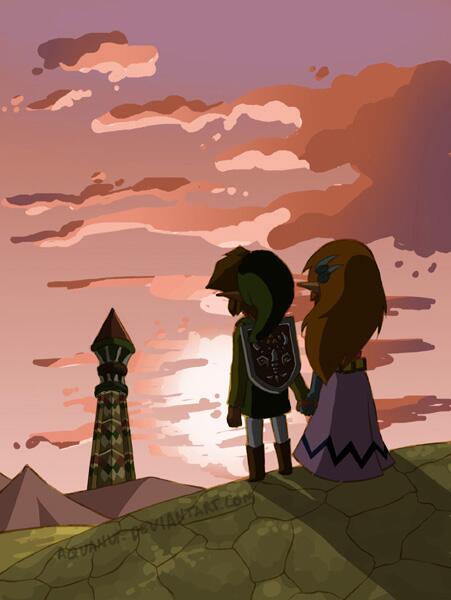
Both The Legend of Zelda: Phantom Hourglass & Spirit Tracks are more childishly charming or casual takes on the franchise, but equally critical in forwarding the legend itself to newcomers of this fantastic universe. Take me for instance—I boarded the S.S. Linebeck in 2006 as a child, and now I’m saving up to dive into the immersive world of 2017’s Breath of the Wild. From then, to now, I’ve been a fan, and it’s all thanks to two of the most underrated games in the franchise.
I played Phantom Hourglass and Spirit Tracks from beginning to end—from the Great Sea to the New World. And you know what? I enjoyed collecting every rupee along the way.

End of Part 2. Go to Part 1 now if you missed it!
(none of this lovely artwork belongs to me)
Let me know your thoughts, memories, or nostalgia while playing Spirit Tracks! Many thanks again to NekoJonez for his hard work in putting this all together! PLEASE visit our hub article for “The Legend of Zelda: A Blogger’s Journey” HERE and reminisce on all the games that brought us joy, wonder, and excitement! We hope you enjoy it all! If you haven’t already boarded the ship in Part 1, go meet me over there, too! It’s been a lot of fun guys, it really has. Thank you so much for going on this journey with me!
– Takuto, your host




